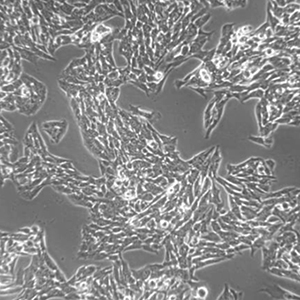MiR-550a-3p restores damaged vascular smooth muscle cells by inhibiting thrombomodulin in an in vitro atherosclerosis model

Accepted: 4 July 2022
Supplementary: 75
HTML: 20
All claims expressed in this article are solely those of the authors and do not necessarily represent those of their affiliated organizations, or those of the publisher, the editors and the reviewers. Any product that may be evaluated in this article or claim that may be made by its manufacturer is not guaranteed or endorsed by the publisher.
Authors
Thrombomodulin (TM) is involved in the pathological process of atherosclerosis; however, the underlying mechanism remains unclear. Oxidised low-density lipoprotein (Ox-LDL; 100 μg/mL) was used to induce human vascular smooth muscle cells (HVSMCs) into a stable atherosclerotic cell model. The expression levels of miR-550a-3p and TM were detected by real-time reverse transcription-polymerase chain reaction. Cell proliferation was estimated using CCK8 and EDU assays. Wound scratch and transwell assays were used to measure the ability of cells to invade and migrate. Propidium iodide fluorescence-activated cell sorting was used to detect apoptosis and cell cycle changes. A dual-luciferase reporter assay was performed to determine the binding of miR-550a-3p to TM. Our results suggested the successful development of a cellular atherosclerosis model. Our data revealed that TM overexpression significantly promoted the proliferation, invasion, migration, and apoptosis of HVSMCs as well as cell cycle changes. Upregulation of miR-550a-3p inhibited the growth and metastasis of HVSMCs. Furthermore, miR-550a-3p was confirmed to be a direct target of TM. Restoration of miR-550a-3p expression rescued the effects of TM overexpression. Thus, miR-550a-3p might play a role in atherosclerosis and, for the first time, normalised the function of injured vascular endothelial cells by simultaneous transfection of TM and miR-550a-3p. These results suggest that the miR-550a-3p/TM axis is a potential therapeutic target for atherosclerosis.
Rights
Key Project of Natural Science research in Universities of Anhui Province; post-graduate project of Natural Science research in Universities of Anhui Province; key Scientific research project of Anhui Provincial Health CommissionHow to Cite

This work is licensed under a Creative Commons Attribution-NonCommercial 4.0 International License.
PAGEPress has chosen to apply the Creative Commons Attribution NonCommercial 4.0 International License (CC BY-NC 4.0) to all manuscripts to be published.

 https://doi.org/10.4081/ejh.2022.3429
https://doi.org/10.4081/ejh.2022.3429






